Questions about the "well-being" of fat palmipeds focus primarily on fattening.
Is there any risk that the animal will be injured during fattening?
The oesophagus of palmipeds has no cartilage and its walls are supple and elastic. The upper opening (the oropharynx) is clear.
A storage pouch called a crop is located at the base of the neck. It expands easily and experiences no physical stress.
A duck's neck can easily triple in size!
Farmers use a tube called an "embuc" to fill the crop. They slide it into the beak of the goose or duck with a sure, precise motion. The embuc is smooth and designed to fit the animals’ morphology.
Fattening doesn’t injure the animals at all when it is done carefully by a trained professional.
Is duck or goose fattening entirely reversible?
The accumulation of fat in the livers of fattened geese and ducks is a normal, non-pathological1 biological process that is also completely reversible.
In fact, the liver plays a major role in fat processing and storage in birds.
A number of studies have shown that the functional integrity of hepatic cells is maintained even after several fattening cycles2,3,4. The cellular hypertrophy is completely reversible.
If a fattened palmiped is taken out of the fattening cycle, its liver will return to its normal morphology in about 15 days. This is what happens when a bird exhausts its energy resources following a long migration.
1 Caldwell SH, Ikura Y, Iezzoni , Liu Z. Has natural selection in human populations produced two types of metabolic syndrome (with and without fatty liver)? J Gastroen Hepatol. 2007; 22: S11-S19.
2 Berradi H, Guy G, Rideau H. A glucokinase-like enzyme induced in Mule duck livers by overfeeding. Poult Sci 2004; 83(2):161-8.
3 Babile R, Auvergne A, Dubois JP, et al. Réversibilité de la stéatose hépatique chez l’oie. 1998 ; 3èmes journées de la recherché sur les palmipèdes à foie gras; Bordeaux : 45–46.
4 Benard G, Benard P, Prehn D, Jouglar JY, Durand S. 1998; 27-28 octobre. Démonstration de la réversibilité de la stéatose hépatique obtenue par gavage de canards mulards. Étude réalisée sur 3 cycles de gavage.1998 ; 3èmes journées de la recherche sur les palmipèdes à foie gras, Bordeaux : 49-52.
Does fattening create stress?
Experiments carried out on this topic have demonstrated that fattening doesn't cause any stress in Mulard ducks.
The corticosterone (a stress hormone) blood level doesn't increase during the fattening phase. It even tends to decrease somewhat5.
Several studies have confirmed that fattening doesn't bother palmipeds any more than catching them or taking them to shelter, both common on all farms6.7.
It has also been noted that the birds aren’t afraid of their feeders. They get used to them quite quickly and don't react by running away or avoiding them - contrary to what they do with people they don't know.
5 Faure J.M., Guy G., Guémené ., Noirault J., Destombes N., Garreau-Mills M. 1998 Behavioural and physical response to ACTH injections, fattening procedure and various potential source of stress in male mule ducks. Congress of International Society for Applied Ethology. Clermont-Ferrand. France. July 21-25th
6 Faure J.M., Guémené D., Guy G., et al. Is there avoidance of the fattening procedure in ducks and geese? Anim Res. 2001; 50: 157–164.
7 Guémené D., Guy G., Noirault J., et al. Fattening procedure and physiological indicators of stress in male mule ducks. Br Poult Sci 2001;42:650-657.
Does fattening cause pain?
None of the studies done so far have concluded that there is any obvious pain directly attributable to fattening.
Neurophysiological studies have shown that nociceptor nervous signals occur only occasionally during fattening and that they are quite limited in scope8.
Visitors sometimes see ducks panting and believe that they are "suffering".
This is, in fact, a thermoregulation reflex. The birds don't have sweat glands and their feathers are insulating. This limits their ability to handle excess body heat (e.g. in the summertime). Geese and ducks have to open their beaks and pant to cool their body and reduce its temperature. Dogs do the same thing.
8 Serviere J, Carriere M, Duvaux-Ponter C, Guy G, Roussel S. Neurogenic inflammation in the upper digestive tract of the mule ducks : effect of a chemical algogen and fattening. Bri poultry sci. 2001; 52, 6: 792?799.
Are there alternatives to fattening?
Despite all of the research done to date, there are currently no alternative techniques to fatten ducks and geese that could be generalised on farms to obtain the same quality of foie gras10,11.
Experimentation and further research may point to new possibilities in the future.
10 Guy G., Bernardet M.D., Davail S., Bernard G., Dupuy L., Gontier K, Jourda C., Rideau N. 2006. Optimisation de la période de prégavage chez le canard. In 7èmes Journées de la recherche sur les palmipèdes à foie gras. p. 90-93.
11 Guy G., Fortun-Lamothe L., Fernandez X. Natural induction of spontaneous liver steatosis in Greylage Landaise geese (Anser anser). J. Anim. Sci. 2013, 91: 455-464.
